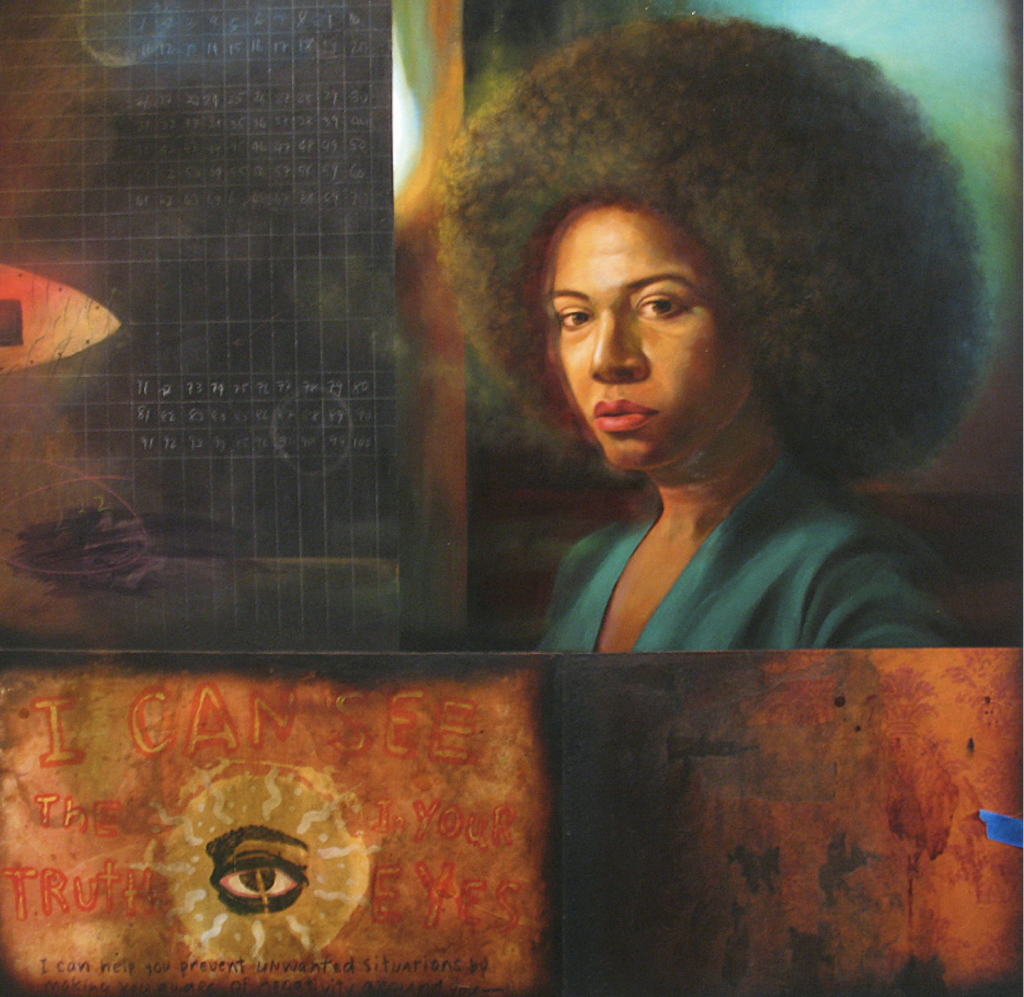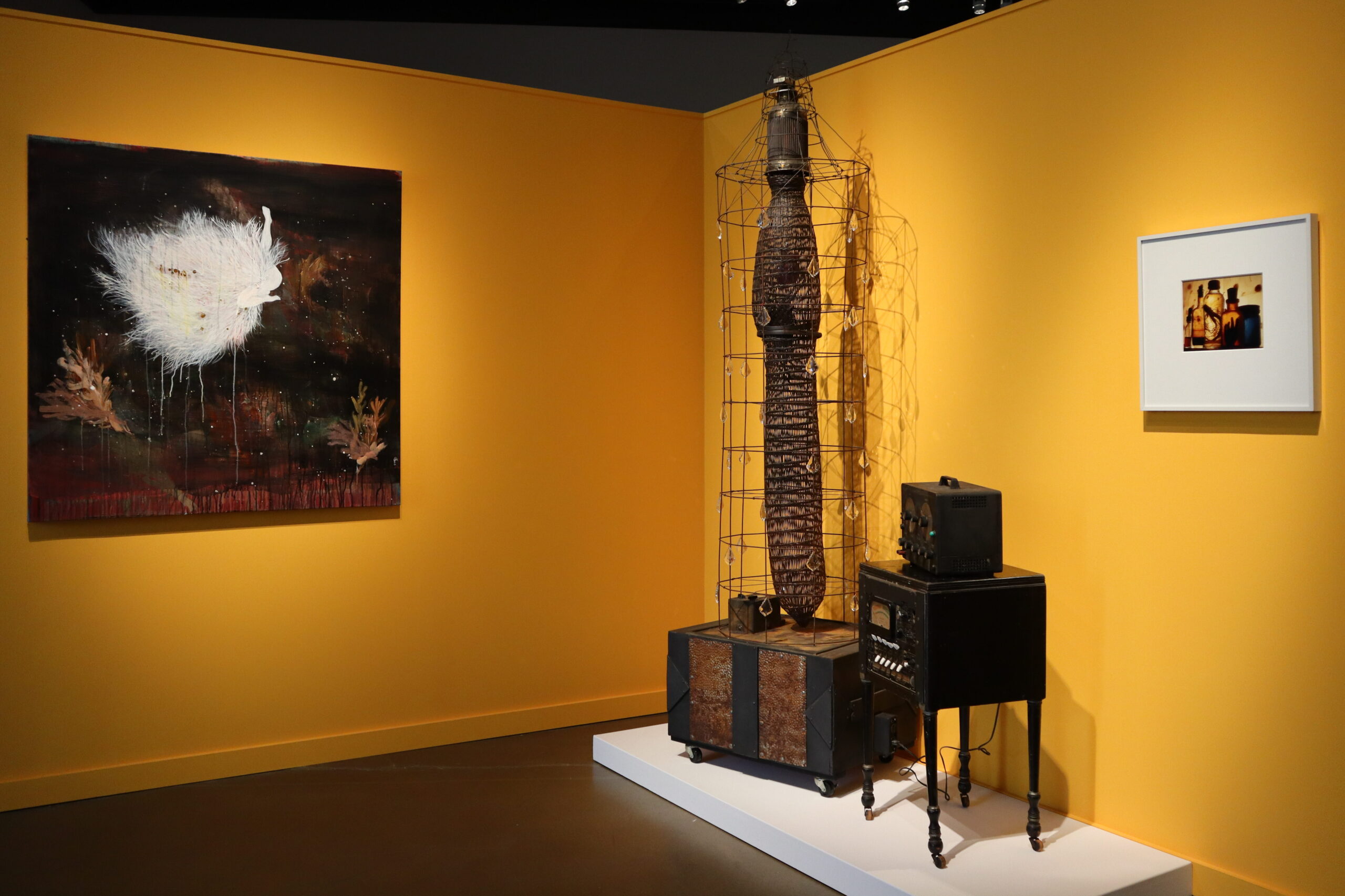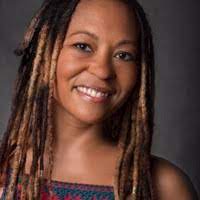crossed kalunga by the stars & other acts of resistance
crossed kalunga by the stars & other acts of resistance features work by seven contemporary artists who evidence transformative and contested circumstances in their production. Art by José Bedia, Athlone Clarke, André Leon Gray, Esmerelda Mila, Rex Miller, Marielle Plaisir, and Renée Stout navigates awareness and adversity in conversation with nature and memory. Each shares a distinctive perspective on how art can speak provocative truths amidst a sea of mutable facts. In her/his own way, each artist gathers and weaves real and imagined histories — past and recent — to embed their art with layers of creative, ancestral, and spiritual DNA to elucidate possible features in formation.

In the Kikongo language of the Congo-Angola Basin, kalunga means, “threshold between worlds,” but often refers to the Atlantic Ocean, reflecting a belief that the souls of the dead follow the setting sun to a land beyond the horizon. During the three and a half centuries of the transAtlantic trade in enslaved Africans, this belief was affirmed. Whether the people who made this journey endured the entire Middle Passage or died along the way to become ancestors in the ocean, those who saw anyone from family to friends to their own enemies forcibly transported could come to believe that the departed had been taken to the realm of the dead, and that perhaps these ancestors may return to life, in time, in other forms.

Longstanding traditions of night crossings connect people and faraway geographies to each other sometimes using constellations to map the night sky. To navigate the seas, many coastal communities have relied on these acts of knowing and stellar resources for millennia. With mercenary intentions, colonial maritime merchants, explorers, and privateers also relied on sky maps, sometimes renaming landmasses and people when lost, off course, or stranded by weather. By contrast, asylum-seekers, exiles, and more recent immigrants have also taken to the seas to escape war, plagues, and political oppression. In the arts, Mami Wata, sirens, and sea spirits appear personified as witnesses of such travails in the deep, along shorelines, and in the mysteries.
This exhibition also reflects each artist’s dual role as storytellers who create hybrid realities through their art. With humor, irony, and precision, collectively, these works are a contemporary wunderkammer or “room of the wonders” as the art responds to centuries of injustice and fragmented notions of “otherness” within mainstream discourse. Like a travel journal from the four corners of the globe, the art recombines diaspora seeds scattered by the four winds; they embody a knowing / una sabiduria / une connaissance of crossing kalunga / big waters / the unknowable / the feared in darkness to offer magical sensory engagement.

In the early 1980s, the late poet and scholar Audre Lorde stated that “the master’s tools will never be used to dismantle the master’s house.” Her poignant words recognized the exclusion of Black women, elders, the poor, and lesbians among those who were absent from academia, and who, out of necessity, prioritized survival. This quote has come to represent policies that do not recognize diverse peoples, world philosophies, cosmologies, and ways of being. Recently, the socio-political whiplash that has resulted from post-colonial attempts at inclusion have seen the most virulent attacks on freedom in decades. Increasingly damaging gender politics, police brutality against people of color, the legacy of racist immigration policies, and new suppressive voting legislation are retrogressive as the optics offer the contested progress of removing many of the South’s Confederate Monuments from civic spaces.
Meanwhile, water is one of the greatest challenges of the 21st century — too much or too little — as hurricanes and wildfires leave violent scars across communities. The search for water in space and the birth of space tourism offer new possibilities that compete with maintaining clean drinking water and unpolluted oceans on earth; and as notions of social media influence and “going viral” — having millions of online followers, in part, became synonymous with nouveau nomadic lifestyles — by 2020, a virus known as COVID-19 shut down much global travel, changed habits, frayed trust, and contributed to weakening the fabric of democracy, freedom, and interactions between people as social distancing became the new norm. As it continues to mutate, concepts of humanity, economy, and the need for resilience also shift, and the art seen here offers seven artist’s pushback on one-point perspective. As artists, each present stories of courage, healing, transportive realities, and parallel universes to critique the narrow lens of the known to provide telescopic visions for navigating our perceptions of the present.
Curated by Tosha Grantham

Tosha Grantham’s focus in contemporary art specializes in American and African Diaspora arts including West and Central African art. Her past research emphasizes ‘artists who engage in ephemeral practices, environmental concerns and global trends’ and considers healing rites from creolized West and Central African, Asian, and Native American sources.
Photo by Charlie Eitzen
 ►
crossed kalunga by the stars & other acts of resistance
►
crossed kalunga by the stars & other acts of resistance